Mercer is a brand I’ve seen popping up on Instagram for the past year or so, and for a good reason. If you’re unfamiliar, the brand is a rising design house offering an assortment of watches in both vintage and modern styles, as well as a curated selection of leather goods. Even more impressively, Mercer is based in Princeton, New Jersey, where the brand assembles, regulates, and tests each of its watches before shipping them directly to consumers. Today, we’ll be taking a look at what is likely its most popular neo-vintage piece in the bi-compax Lexington Chronograph — a competitively priced, ‘60s-inspired racing-style chronograph.
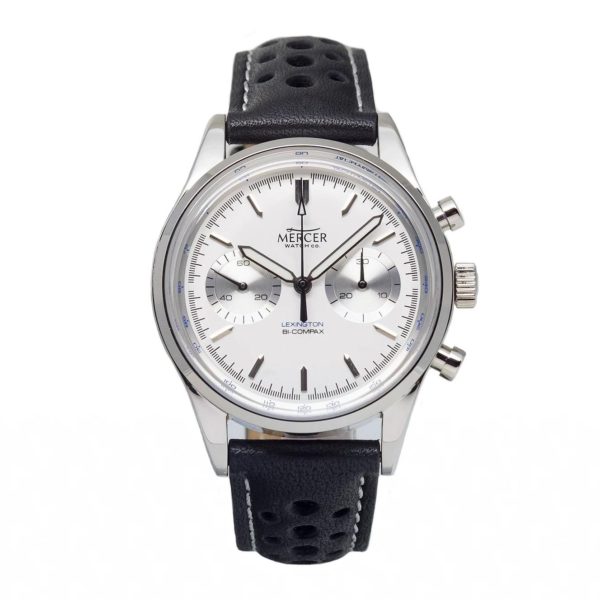
To start off, the Lexington Chronograph uses a 39-mm polished steel case, sitting relatively high on the wrist with its manually-wound movement at 13.5-mm. The case features two simple pump pushers and a push/pull crown on its side. The racing chronograph dial of the watch is available in three colorways: blue with silver accents, a panda-style white with black, and a bright white with silver. Around the edge of each is an outer chronometric scale, with a racing-style minute ring just within, and applied markers accented with a small amount of lume to designate each hour. The watch features a 30-minute chronograph counter and running seconds counter at the 3 and 9 o’clock positions, respectively, with two lume-filled sword-style hands sweeping over the dial for hour and minutes, and with a complementary arrow-tipped hand for the chronograph seconds.
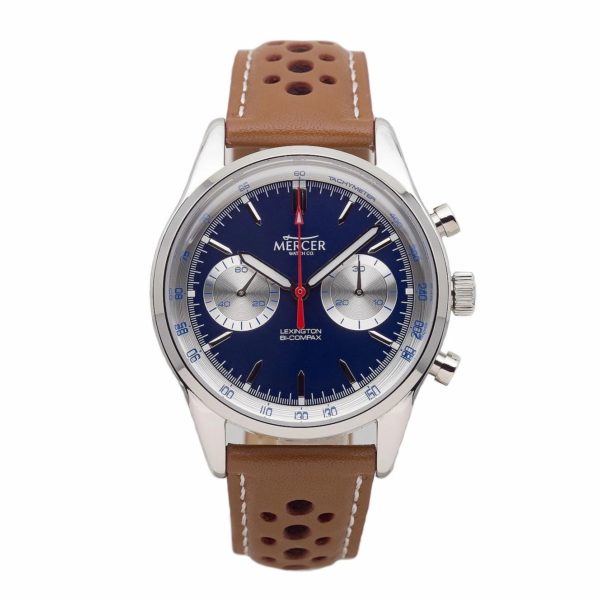
Inside the watch, and visible through a sapphire case back, is the Chinese-made Sea-Gull ST1901 manually-wound chronograph movement, based upon the 1960s Venus 175 movement, and capable of a 45-hour power reserve. Mercer has noted this movement is regulated and tested in the US before the final American watch assembly of each piece. The Chinese movement allows for a hard to beat price point for the Lexington Chronograph, being marketed through the brand’s website at $529, and if you have any concerns on its quality Mercer is backing up each purchase with a 2-year warranty — an incredibly uncommon feature in the microbrand market.
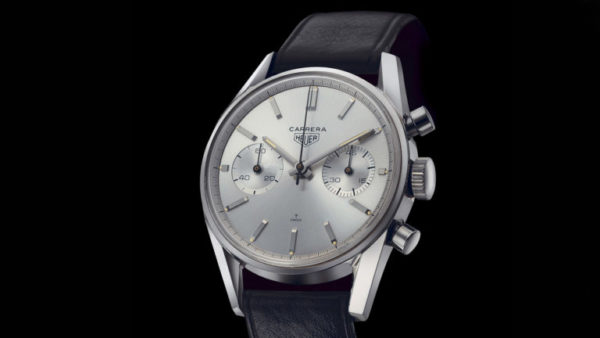
The Lexington Chronograph has some clear vintage influences in its overall modern design. The watch most notably seems to draw from 1960s-era Heuer Carreras (picture above), where we can see the influences in the simple pump pushers, color schemes, and hour markers. It’s also interesting the brand opted for the ST1901 movement, which is both based upon a vintage mechanical design and uses a manually-wound mechanism which would have been the standard in ‘60s-era chronographs. The brand even opted for a complete polishing of the watch’s case alongside the domed crystal protecting the dial, which while uncommon today, were common features during the mid-century.
The last vintage-inspired feature is the inclusion of the “Bi-Compax” script towards the bottom of the dial, which isn’t itself a common trait among ‘60s era racing chronographs, but nonetheless alludes to the language that would be used to describe them by modern vintage watch collectors.
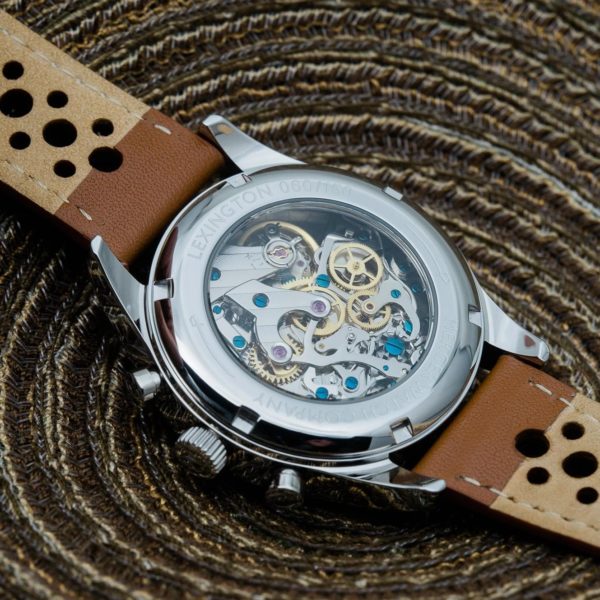
For its vintage traits, the watch is clearly a modern development, with it opting to further riff off of its vintage influences with contemporary design decisions. These are seen notably in the accenting of the watches — while white, blue, and panda style chronographs existed in the historical era, they didn’t use the bright and more contrasting accents seen today like in the common usage of silver, blue, and red. Outside of color accenting, the dial uses more modern hands and clearly modern finishing. Finally, the case shape seems to be a more modern design — that is, at least, that it isn’t obviously directly inspired by anything from the 1960s, and the sapphire case back is a nice contemporary touch to showcase the movement.
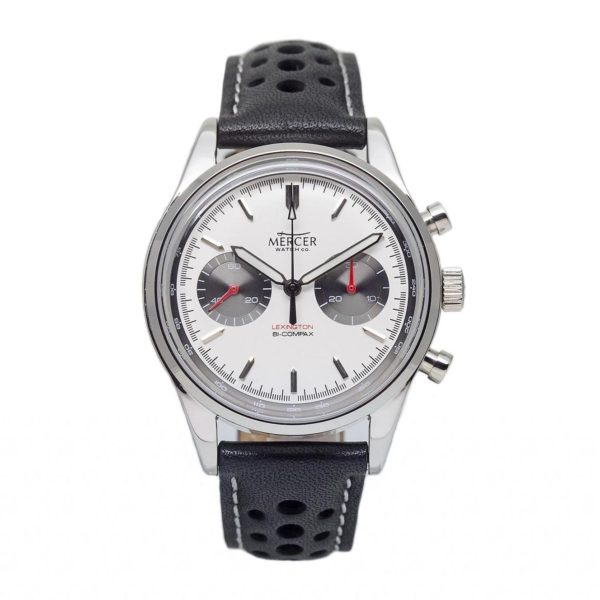
Mercer, like a lot of the small-scale, independent brands we’ve been covering on “Vintage Eye” lately, is another rising company offering consumers cool neo-vintage watches at an accessible price point. Yet unlike other brands, Mercer is doing so not exclusively as a neo-vintage watch producer, but as a larger design house also offering leather goods and modern pieces, too. This strategy allows the brand to avoid falling exclusively into the neo-vintage niche, while still allowing it to create interesting designs within it such as the Lexington Chronograph. I’m excited to see where the New Jersey brand will be heading, and with the next release planned to be a smartly designed, modern GMT appropriately named the Nomad GMT, it seems to be on the right path.
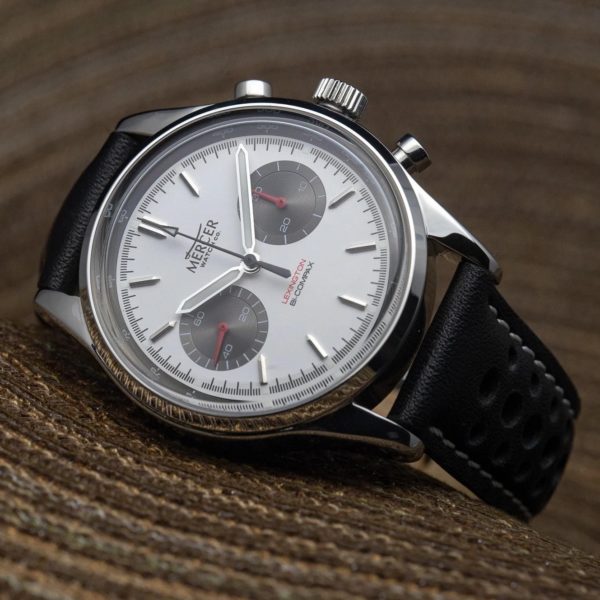
For the most recent article in the “Vintage Eye” series, in which we take a look at the Zodiac Olympus and compare it to its historical forebearer, click here.
Caleb Anderson is a freelance writer with a primary focus on vintage watches. Since first discovering horology, he has garnered extensive knowledge in the field and spends much of his time sharing his opinions among other writers, collectors, and dealers. Currently located near New York City, he is a persistent student in all things historical, a writer on many topics, and a casual runner.</em


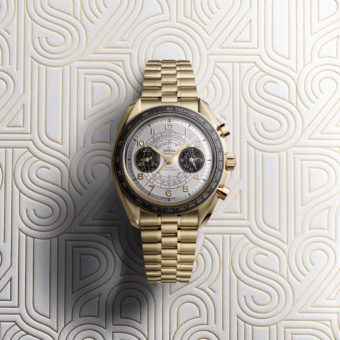
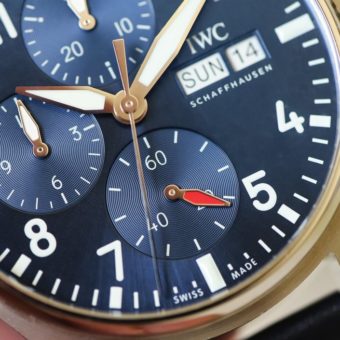
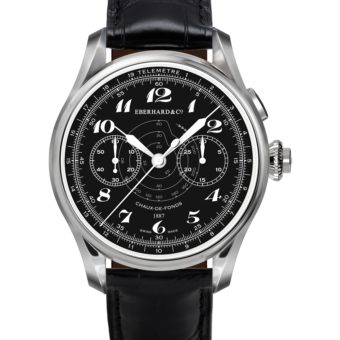
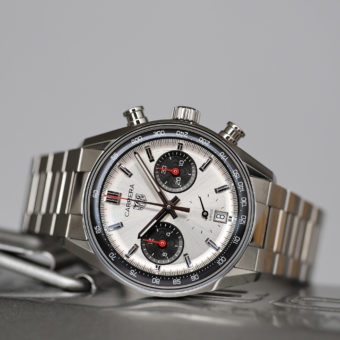
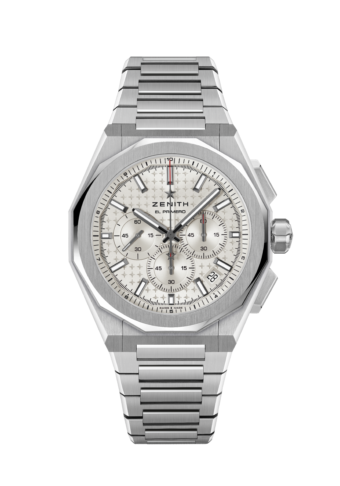
Something about that 30-minute register being split into 2.5 minute intervals drives me crazy; this actually keeps me from buying the watch. A chrono minute counter should be down to the minute imho
I got a seagull 1963 chronograph. Looks the same.
Extremely interested in the Mercer chrono. Can you send me any brochures etc. Thank You
Google will direct you to their website